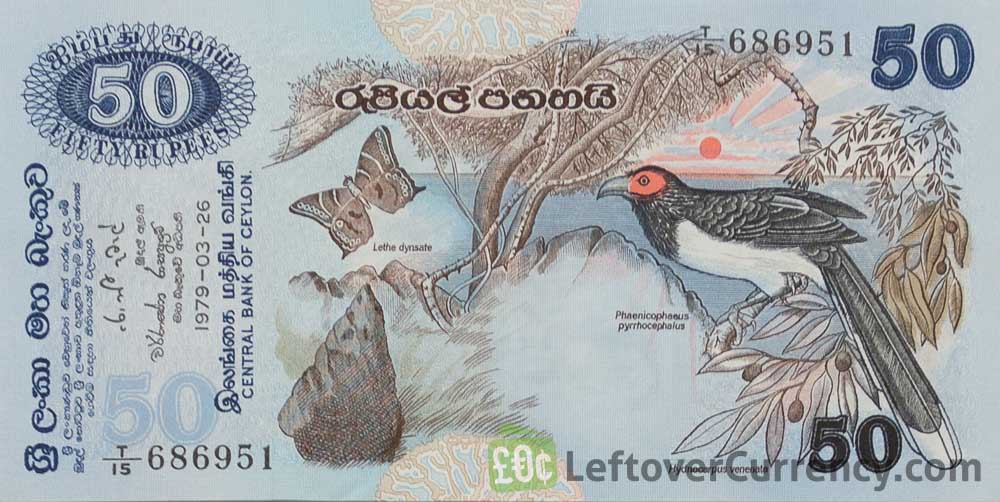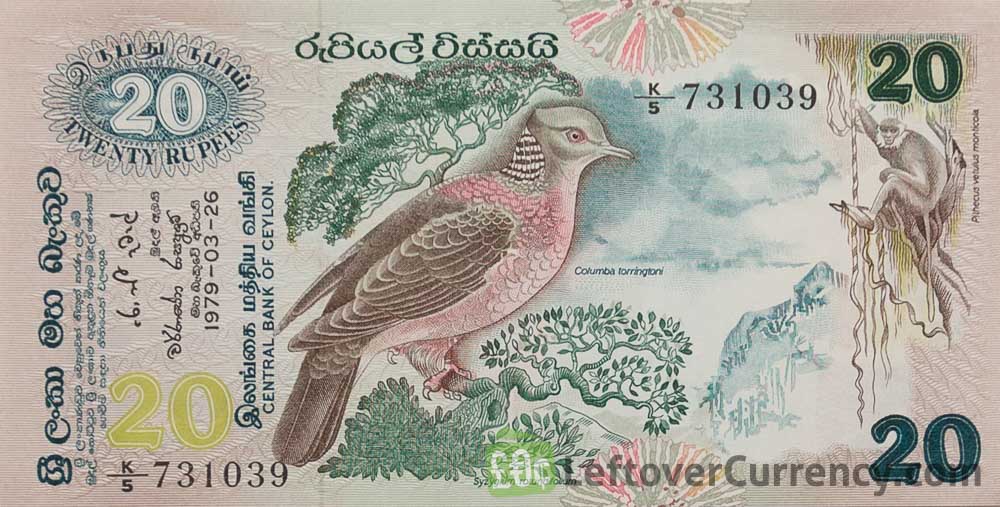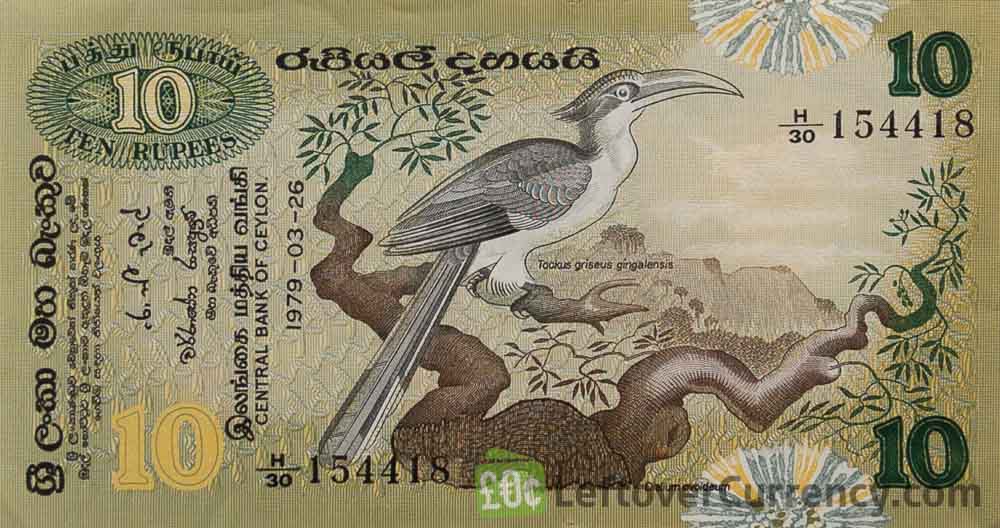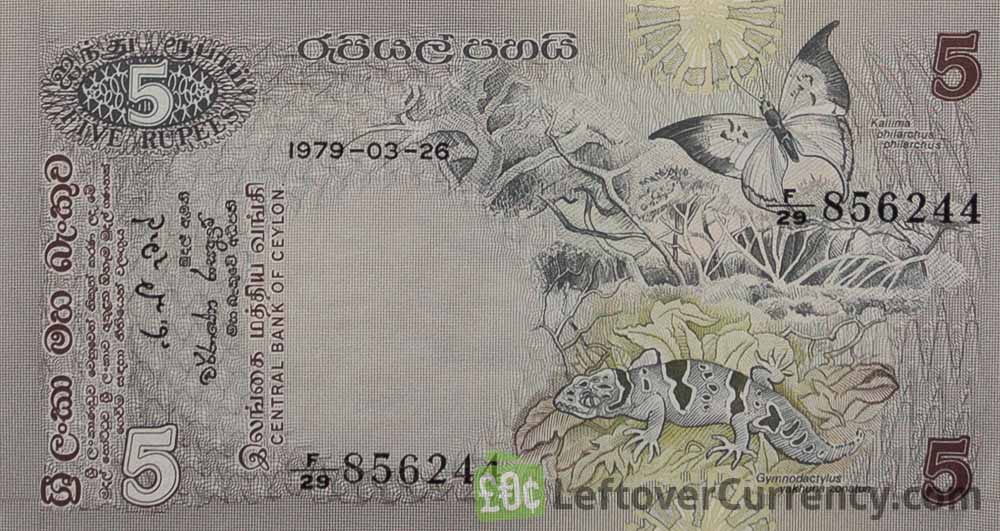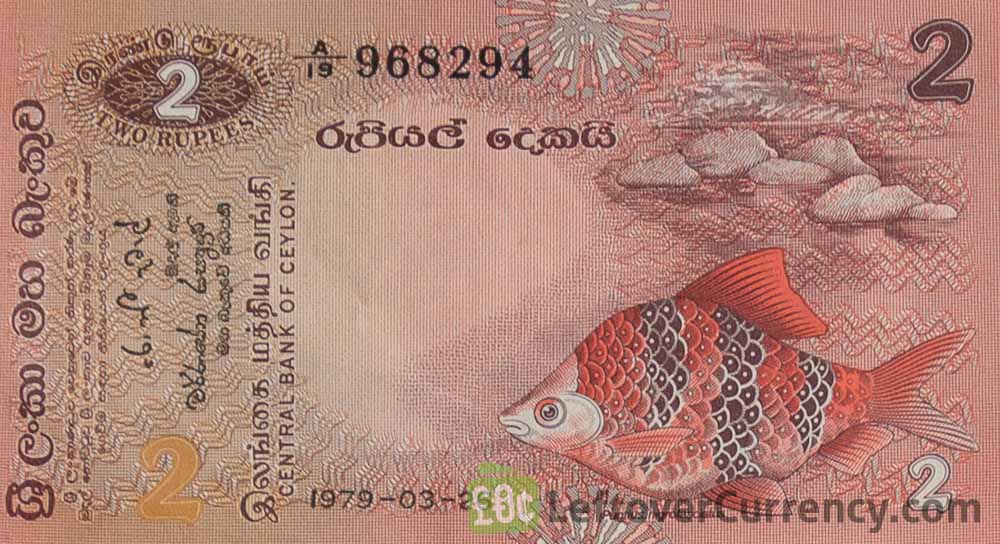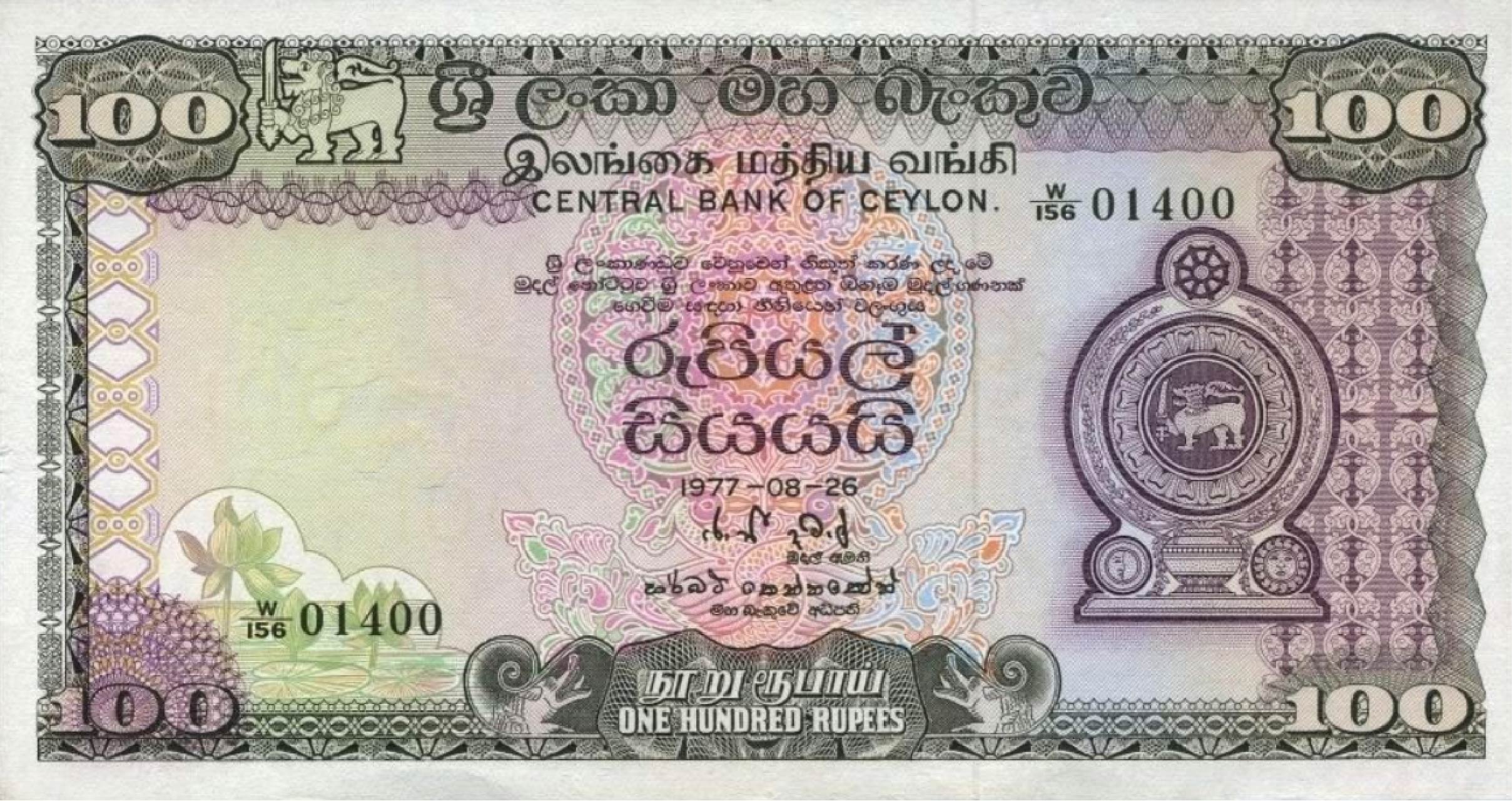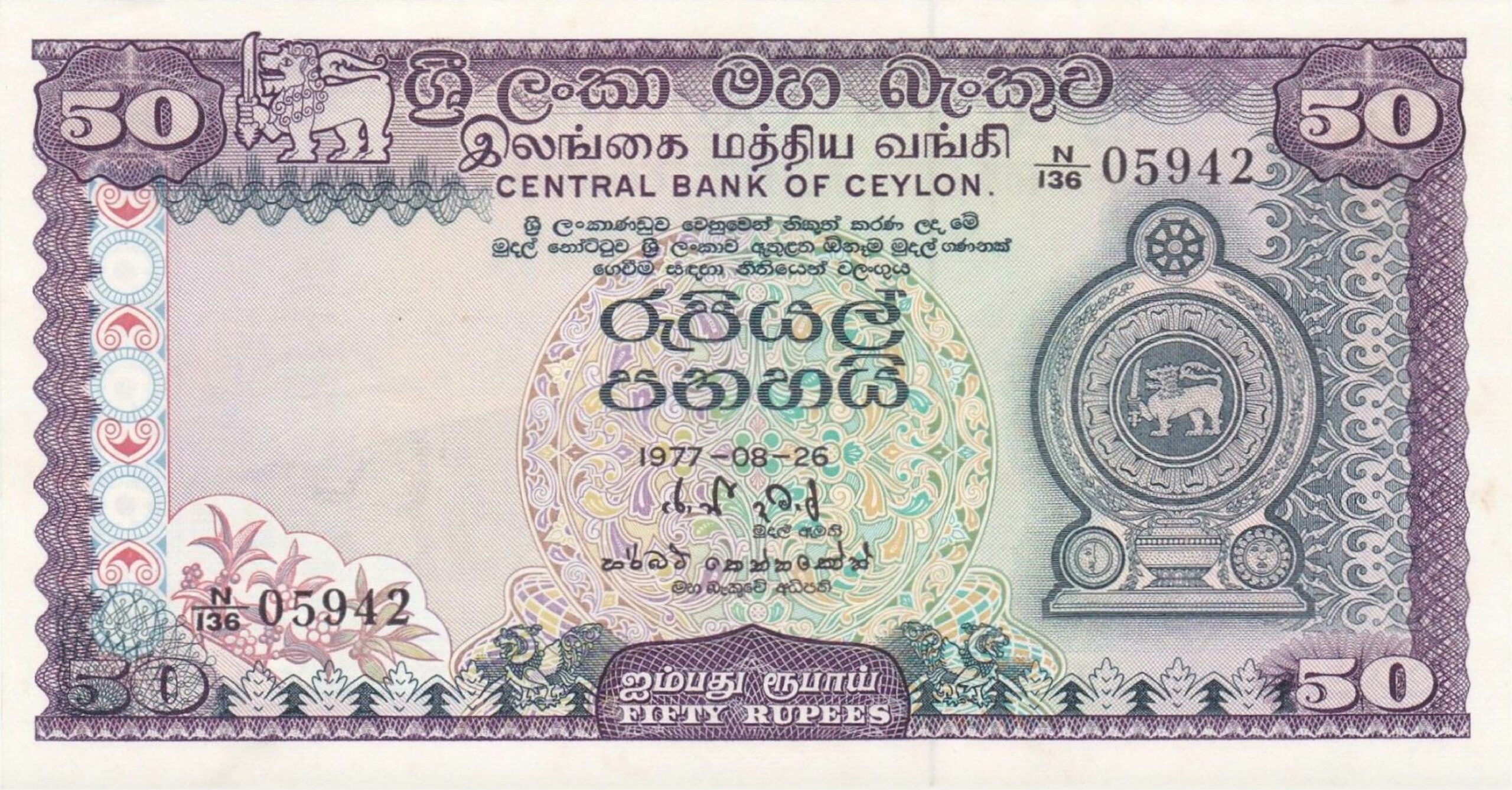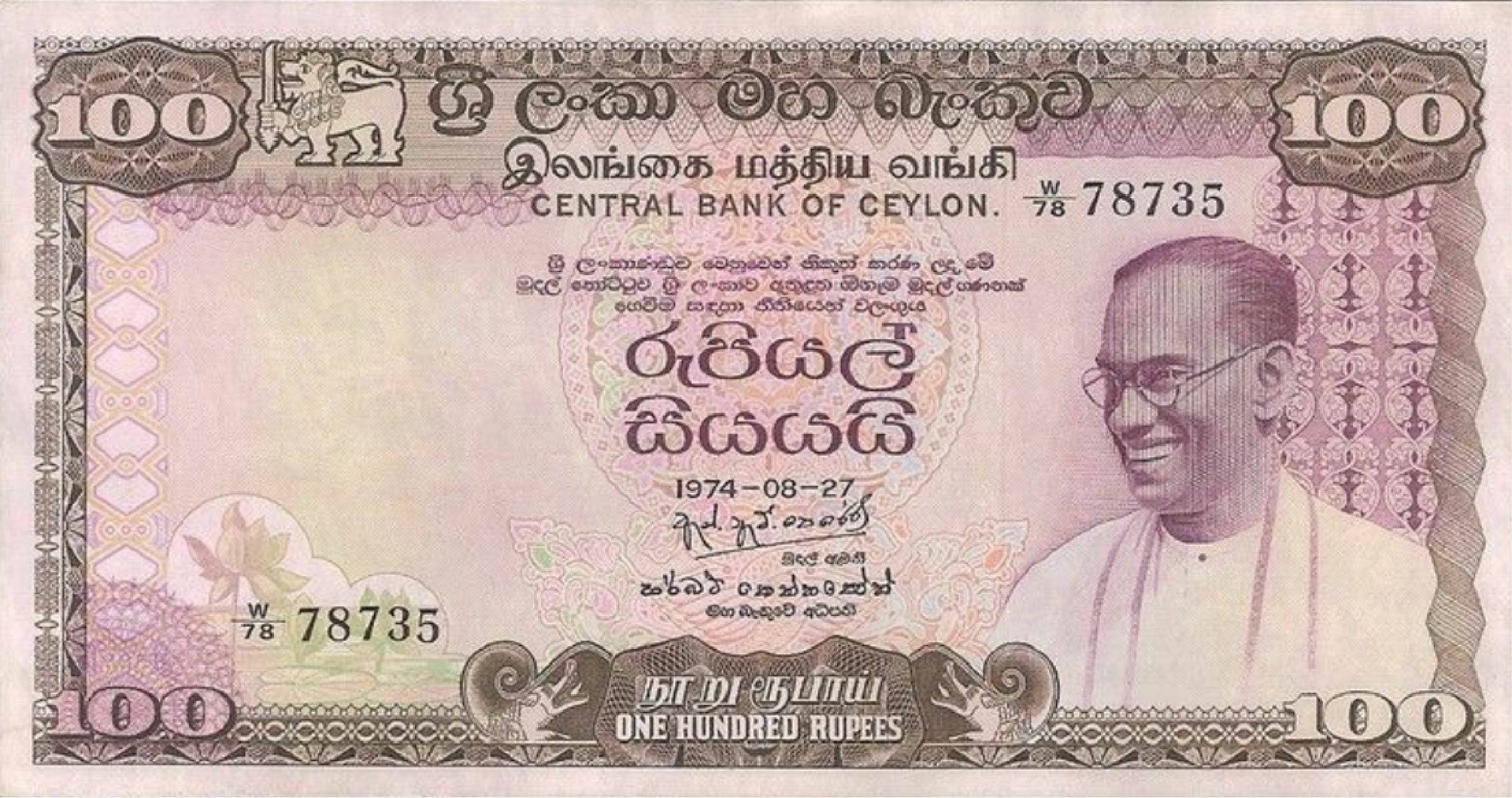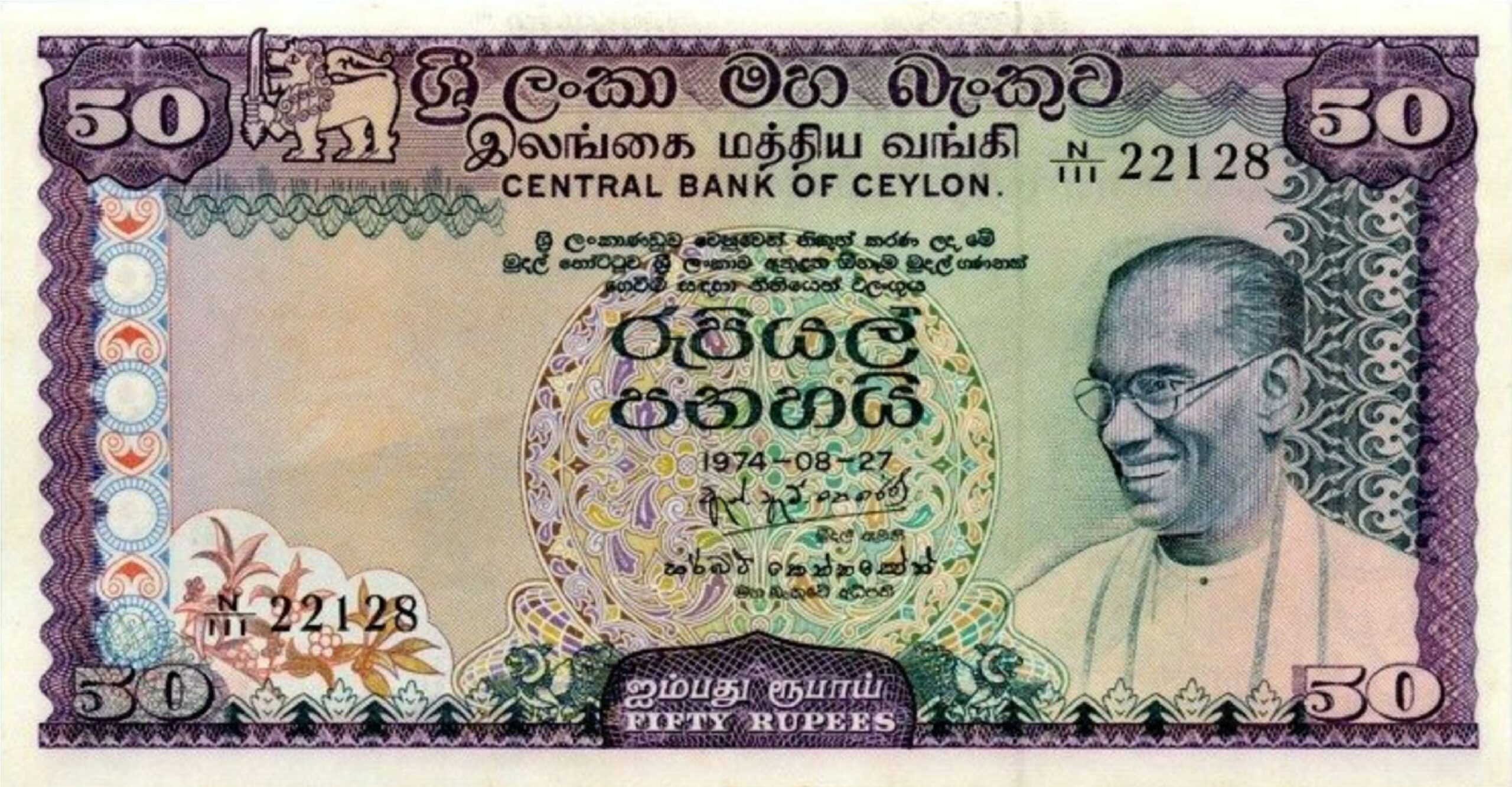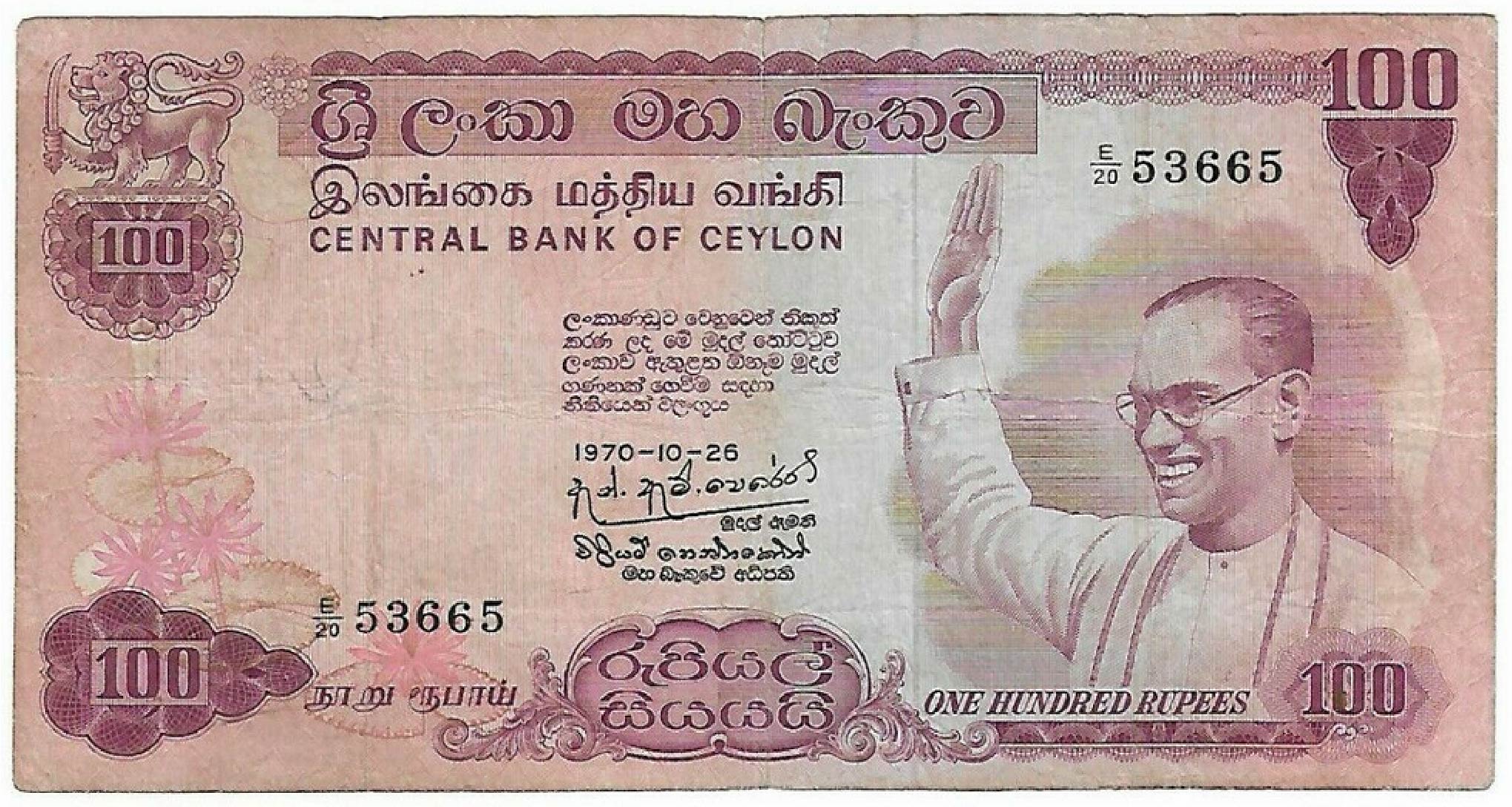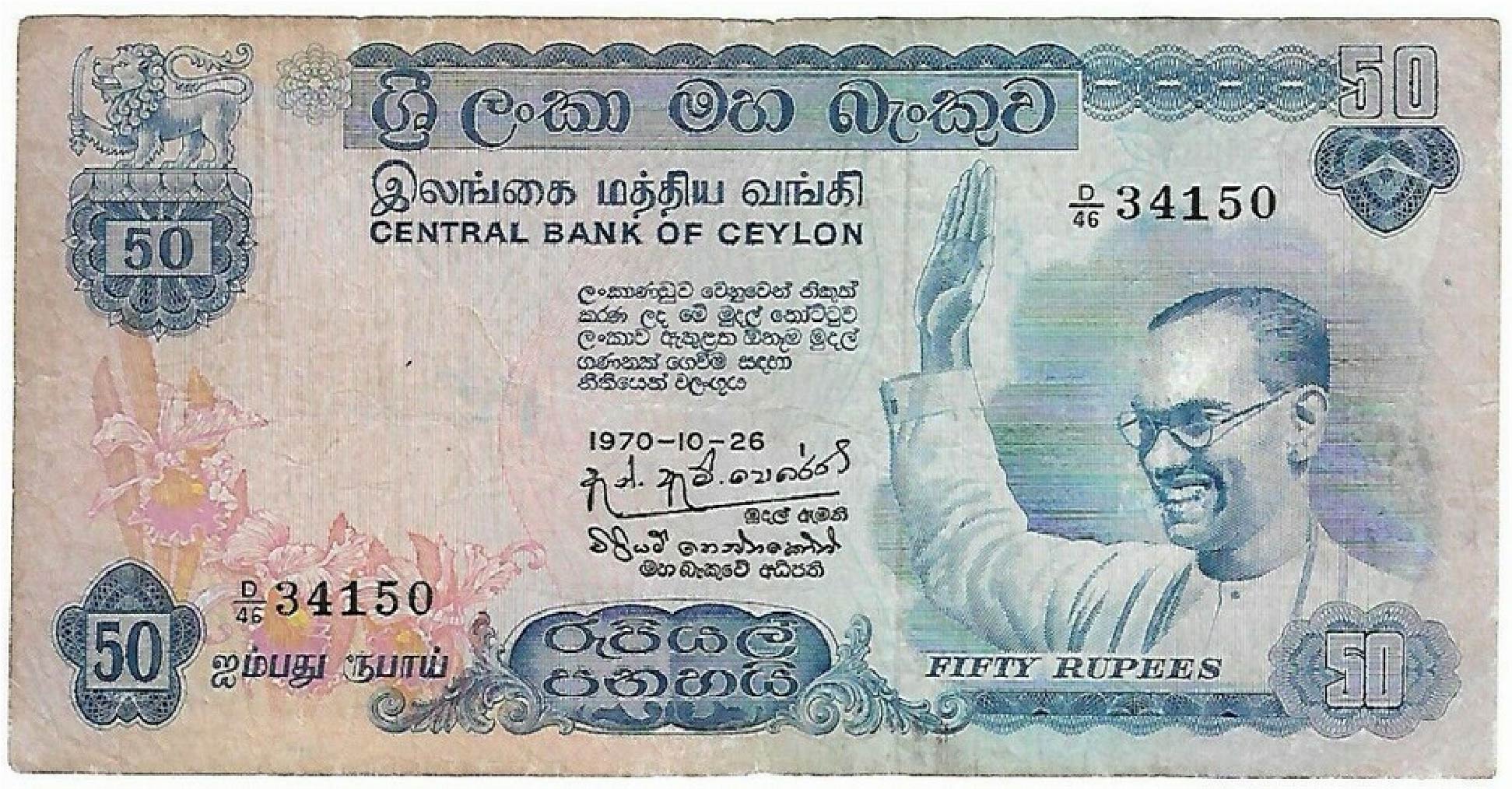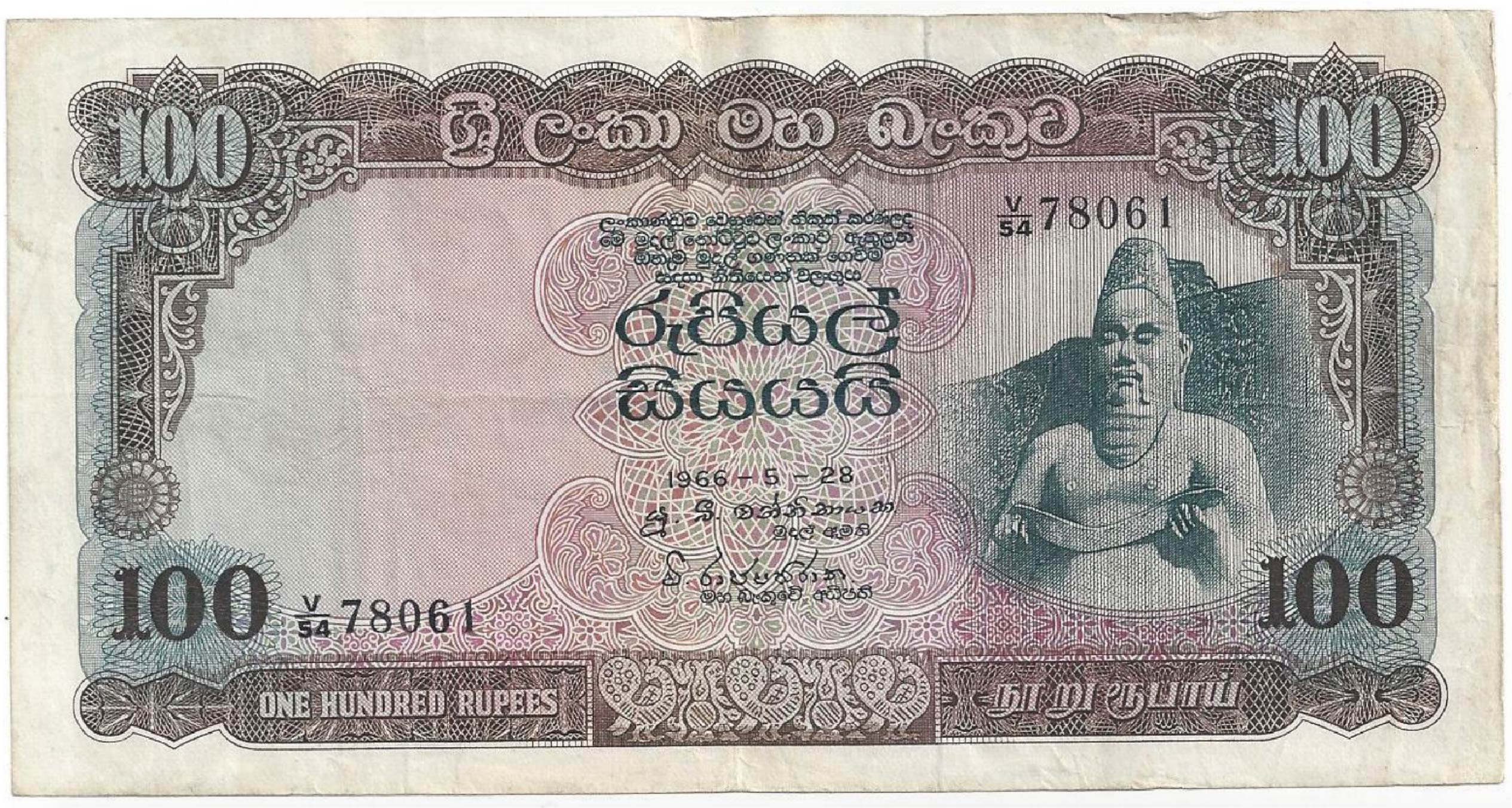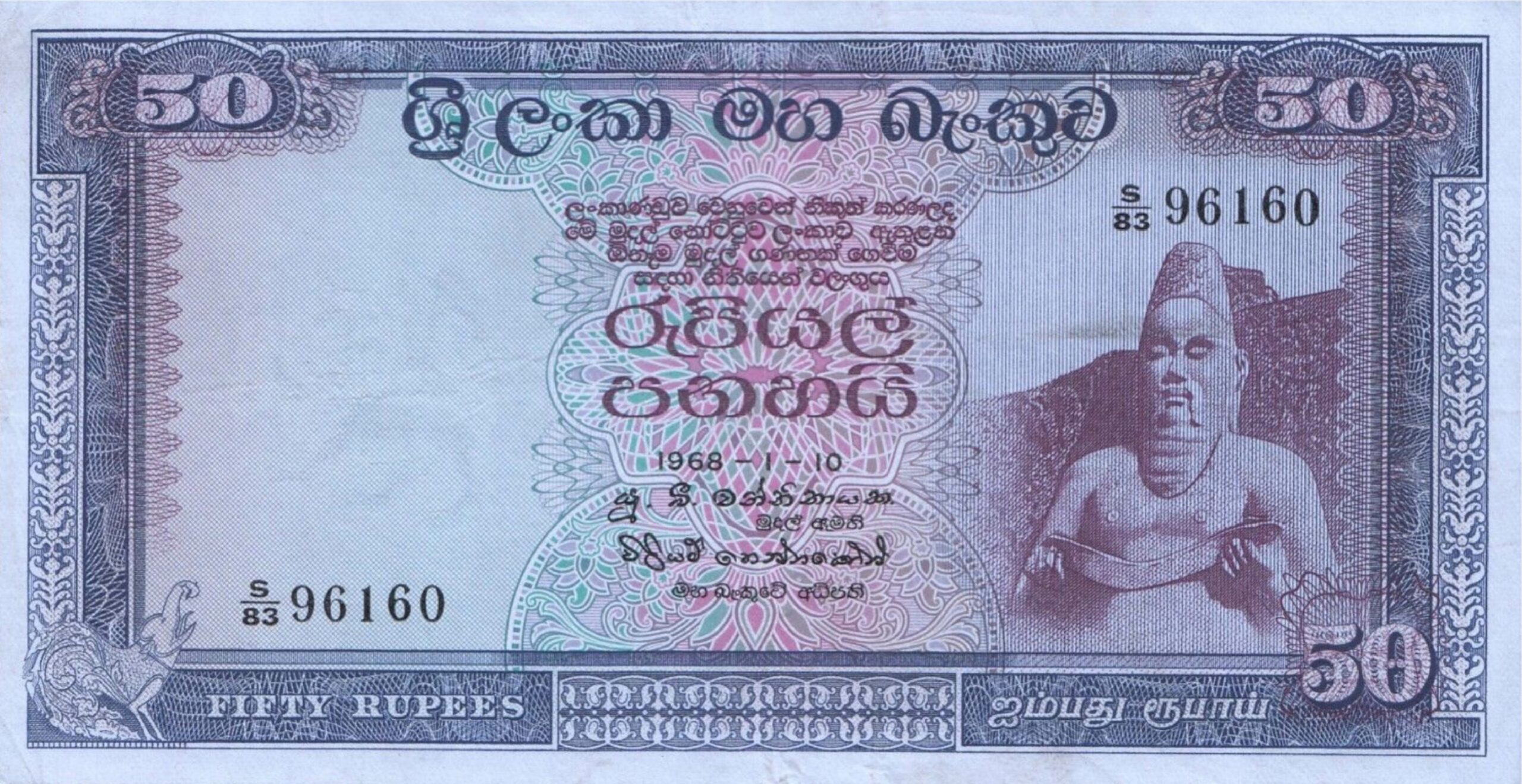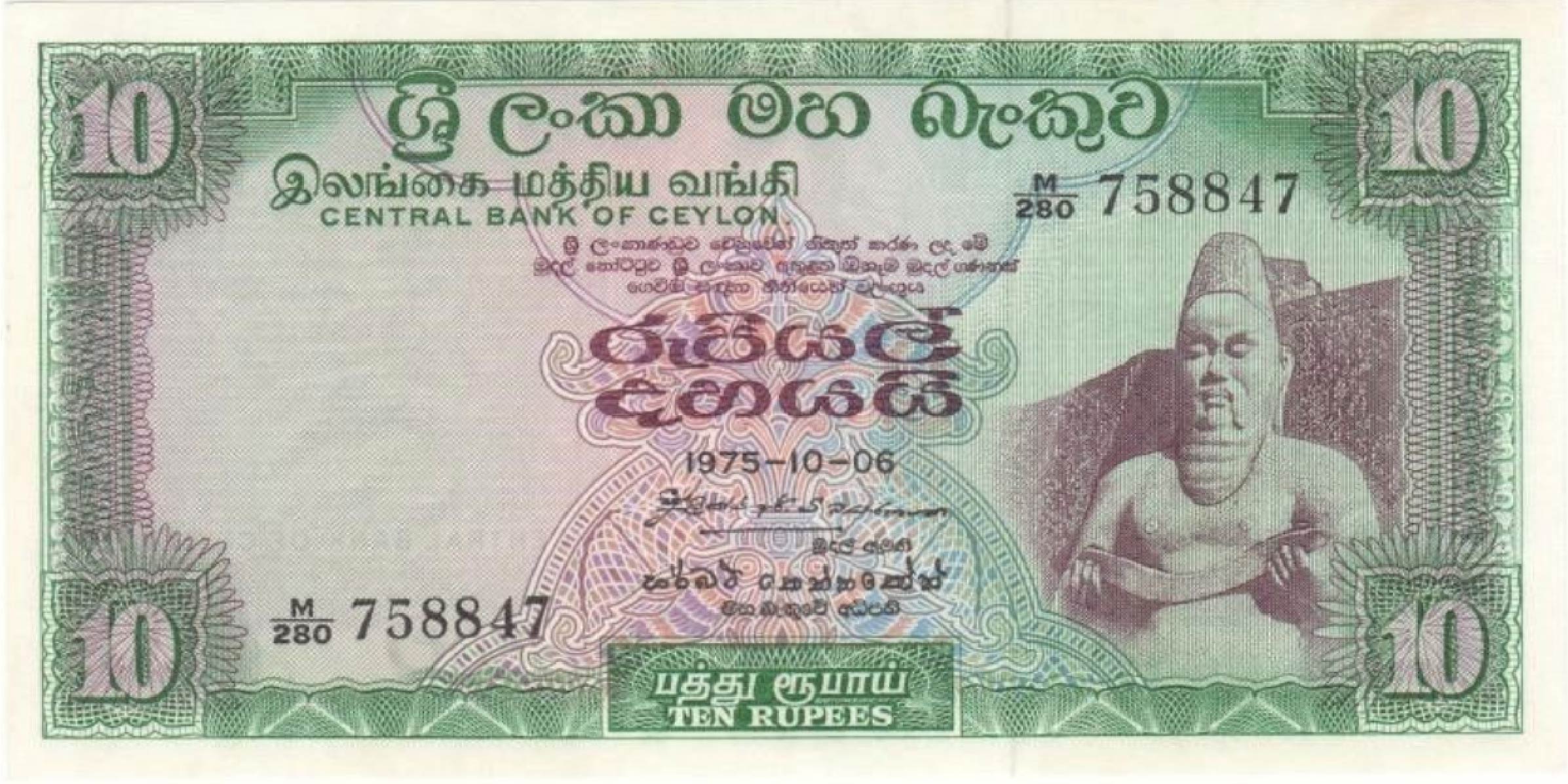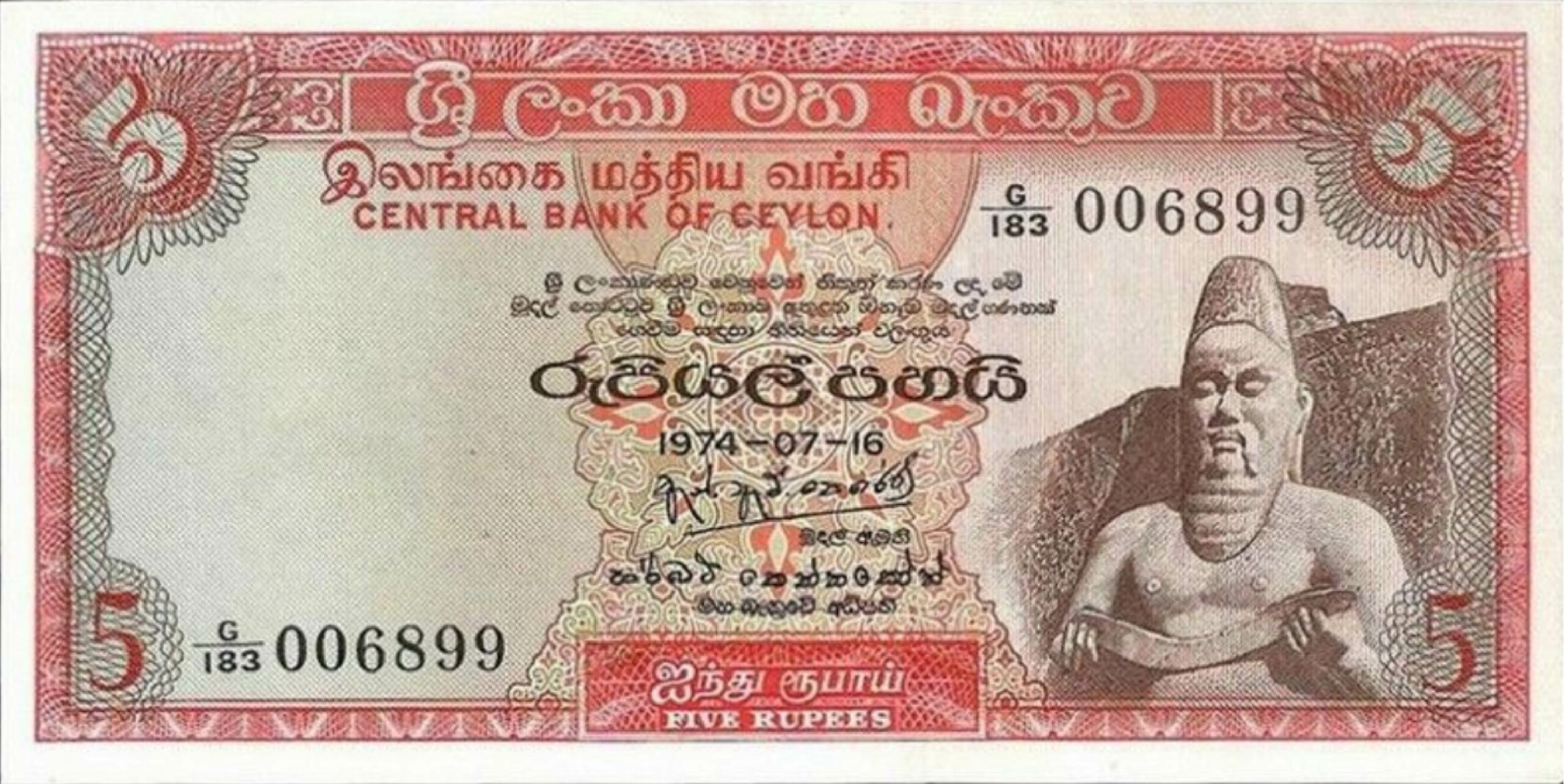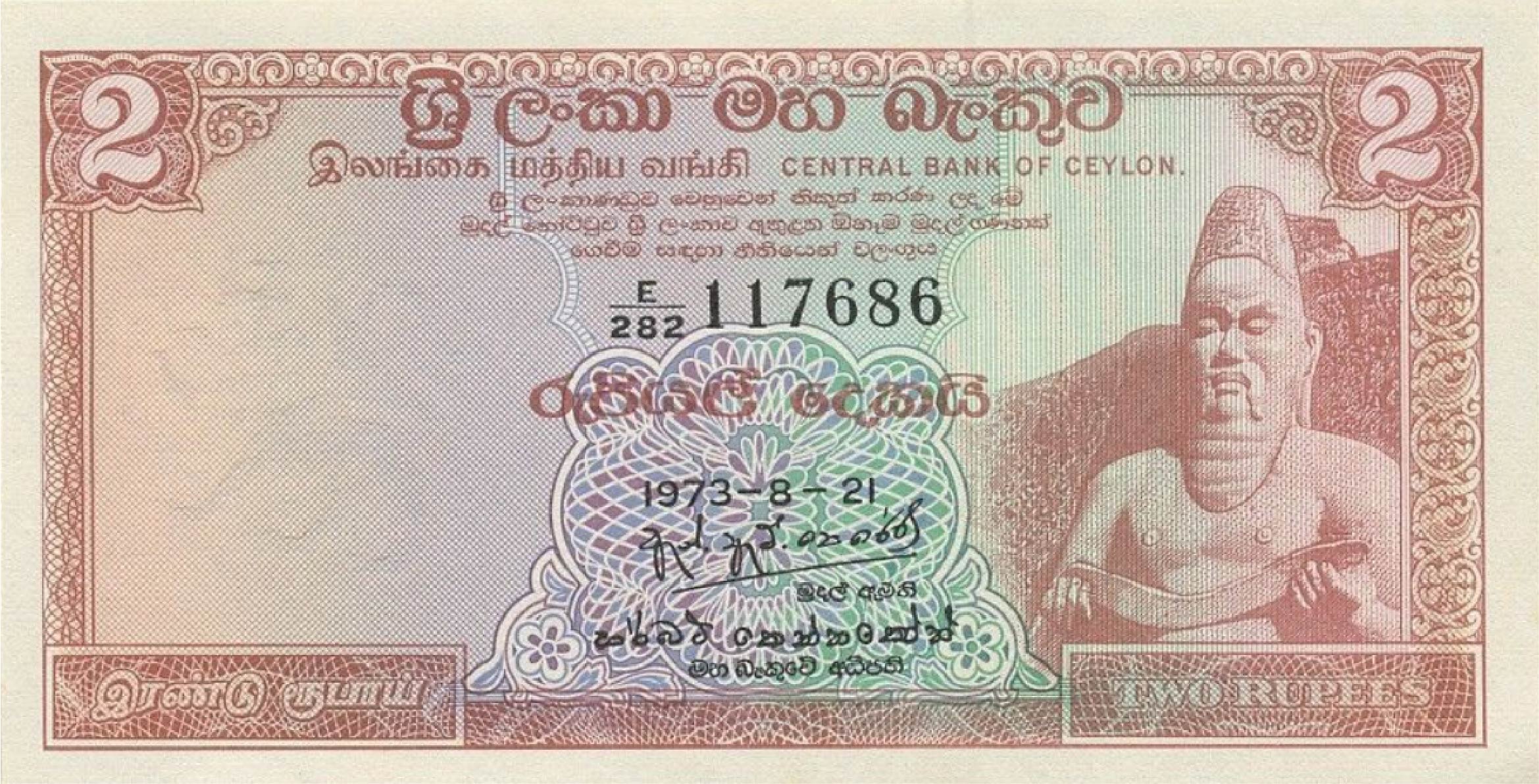withdrawn Sri Lankan Rupees banknotes
Showing 17–32 of 52 results
-
50 rupees Central Bank of Ceylon banknote (Fauna and Flora series)
The design of the old Rs50 Ceylonese Rupees bill is based on paintings by Sri Lankan painter, architect and landscape artist Laki Senanayake. It shows different Ceylonese animals and plant species against a scenic background with a lake and a red sunset. The blue-coloured Fifty Rupees bill has text in three languages: Sinhala, Tamil and … ContinuedYou get: £0.077001 LKR = £0.0015400000 -
10 rupees Central Bank of Ceylon banknote (Fauna and Flora series)
The bird on the green-coloured 10 Ceylonese Rupees banknote is the common Sri Lanka grey hornbill. The long beaked bird sits on a branch against a scenic background with mountains and trees in the background. The backside of the old Rs 10 bill has a vertical design and shows more animal and plant species that … ContinuedYou get: £0.015401 LKR = £0.0015400000 -
5 rupees Central Bank of Ceylon banknote (Fauna and Flora series)
The 5 rupees bill from the Central Bank of Ceylon is one of very few banknotes in the world of which the main colour of its design is grey. On the front side are a gecko and butterfly. The back side of the old Rs 5 bill from Sri Lanka is a flying squirrel and … ContinuedYou get: £0.007701 LKR = £0.0015400000 -
100 rupees Central Bank of Ceylon banknote (Armorial Ensign 1977)
The 1977-dated banknote of 100 rupees from the Central Bank of Ceylon has on its front side the armorial design of Sri Lanka, featuring a lion holding a sword. On the back side is a view on the ancient structure of Polonnaruwa Vatadage.You get: £0.154001 LKR = £0.0015400000 -
50 rupees Central Bank of Ceylon banknote (Armorial Ensign 1977)
This banknote of 50 Ceylonese Rupees from 1977 features the Armorial Ensign of the Socialist Republic Sri Lanka, the heraldic symbol of the lion with Sword featured on the country’s national flag. Text on the old Rs 50 bill reads ‘Central Bank of Ceylon’. On the back side of the fifty rupees note is a … ContinuedYou get: £0.077001 LKR = £0.0015400000 -
100 rupees Central Bank of Ceylon banknote (S.W.R.D. Bandaranaike)
Former prime minister and founder of the Sinhala nationalist Sri Lanka Freedom Party, the person on this Rs 100 banknote is S.W.R.D. Bandaranaike. On the back side of the one hundred rupees bill is the ancient Buddhist temple complex of Polonnaruwa Vatadage.You get: £0.154001 LKR = £0.0015400000 -
50 rupees Central Bank of Ceylon banknote (S.W.R.D. Bandaranaike)
The old 50 rupees Ceylon banknote features the portrait of Ceylon’s 4th Prime Minister, S. W. R. D. Bandaranaike. On the back side of the Rs 50 bill is a scene showing a tea plantation and tea pluckers.You get: £0.077001 LKR = £0.0015400000 -
100 rupees Central Bank of Ceylon banknote (S.W.R.D. Bandaranaike swearing oath)
This Bank of Ceylon banknote of 100 rupees shows President S.W.R.D. Bandaranaike raising his hand while swearing the presidential oath. On the back side of the old Rs100 bill are three traditional Kandyan dancers and a drummer.You get: £0.154001 LKR = £0.0015400000 -
50 rupees Central Bank of Ceylon banknote (S.W.R.D. Bandaranaike swearing oath )
Ceylon’s 4th Prime Minister Solomon W.R.D. Bandaranaike is pictured while swearing the oath and raising his hand, on this Rs50 banknote. On the back side of this old Sri Lankan banknote is the statue of Queen Viharamahadevi outside of Colombo town hall.You get: £0.077001 LKR = £0.0015400000 -
100 rupees Central Bank of Ceylon banknote (King Parakramabahu I statue)
The Rs100 banknote is the highest valued note of the King Parakramabahu series. It features the ancient Sinhalese’s king’s stone statue. On the back side is the fresco of Sigiriya showing two women with fruit and jewelry.You get: £0.154001 LKR = £0.0015400000

 Loading
Loading
 Filter
Filter
